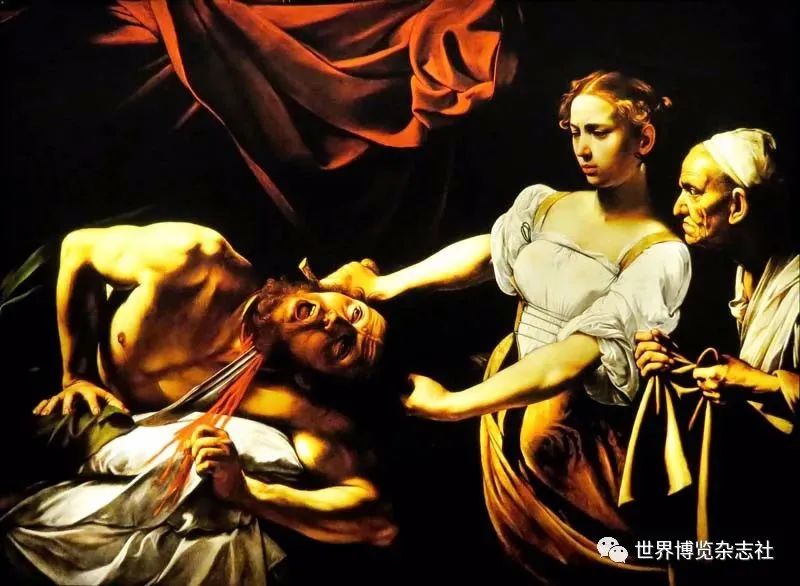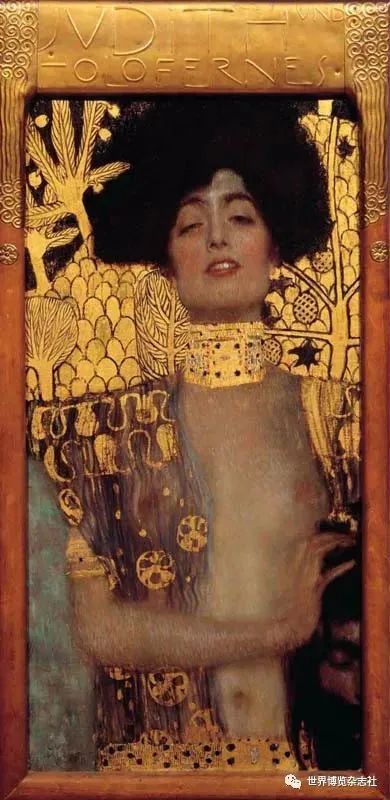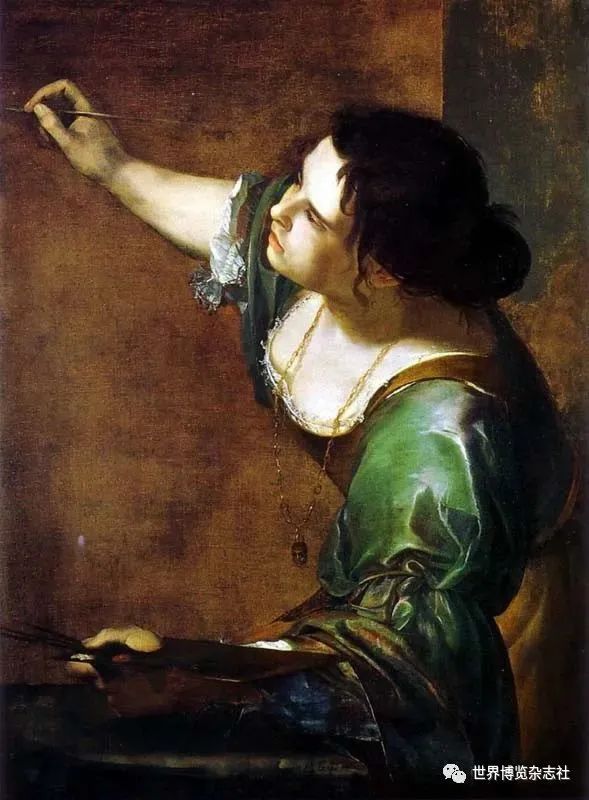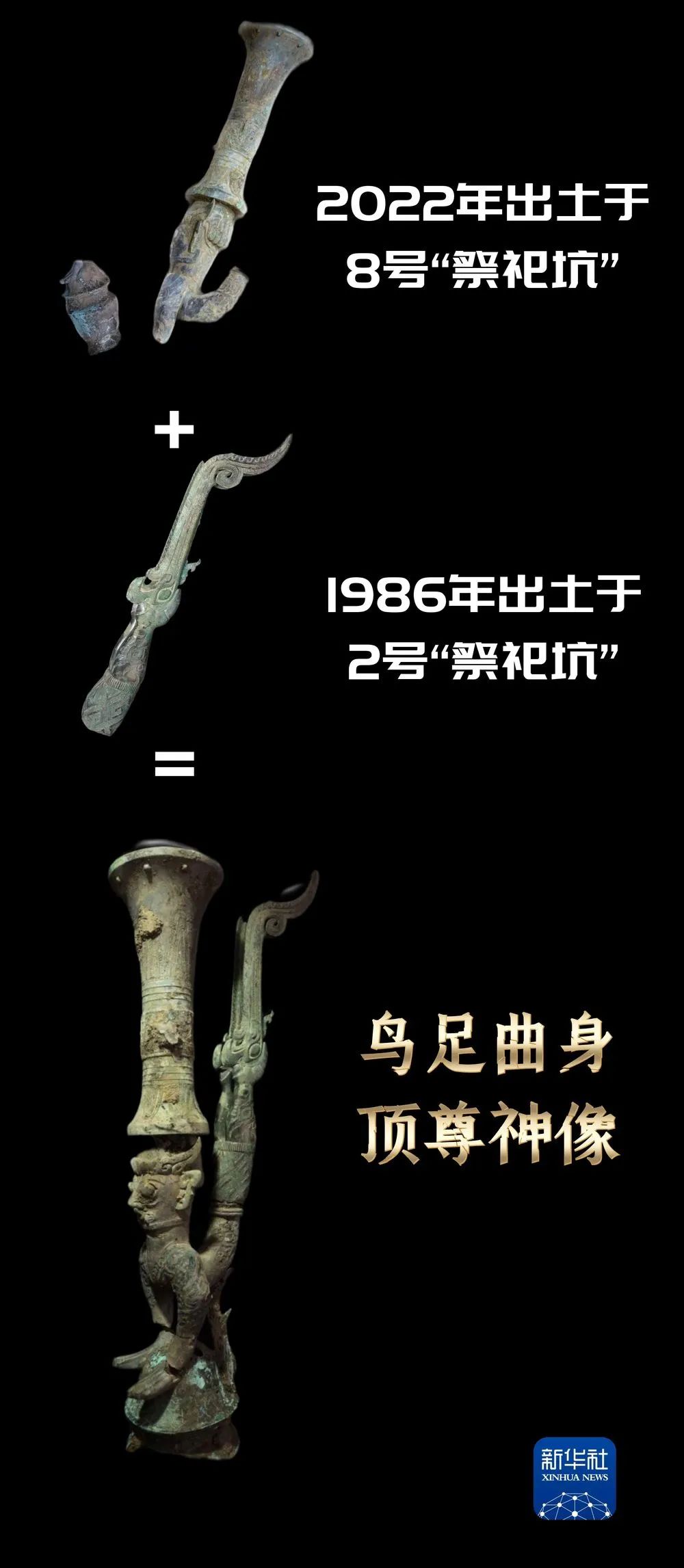Revenge on the canvas
Author:Knowledge Society Time:2022.08.30
A long time ago, the Assyrian Army besieged the city of Beturia, where the Jewish lived, and the residents in the city were frustrated. At this time, the beautiful and rich widow You Di stood out. She and the maid entered the Assyrian barracks and confused the Associate Holosnes with her own beauty. Head, wrap it with cloth, and return to Beturia while the night and maid. Seeing Hoorifernes' head hanging on the outer wall of the town, the Assyrian soldiers were scattered and fled, and the city of Beturia was saved. The story of You Di comes from the "Side of the Classic" instead of the Bible, and it is a book of ancient Jews before 250 AD. You Di is also a favorite role of European artists in previous ages. It has a large number of related paintings (more than 114), sculpture, and drama. Every painter in the Renaissance has a work with You Di.

"Youdi Beheading Holoca", the author is the 14th -century male artist Karavaggio.

"The head of the Euki and Holosnes", the author is the 20th -century male painter Gustav Klinste.
When male artists describe this story, most of them show the protagonist's peace and courage to face the tyranny (also showing the violence and pornographic side in this story, such as the 20th century Vienna separated painter Gustav Klingm special). However, when the 17th -century female artist Artemisia Gentileschi reproduced the story on the canvas, the critics were considered to be "revenge with oil." After her "Youdi Beheading Holoca", she created her 7 -month rape trial. In the painting, she imagined herself as Youdi, and the people who raped her were Holoverne S.. You Di's arms in the painting seemed strong and powerful, and the moment the sword waving was not hesitant. For comparison, we can see more famous male artists, such as Caravaggio's paintings of the same name, pay attention to observing the image of the woman in the painting. Although the composition and technique of Atmihia followed Caravaggio, in the paintings of Atmihia, the woman who took the sword in hand was unwavering. Her knee was on the bed, and her sword -waving hand tried her best. The woman in Caravaggio's work was disgusted, and she was far away from the victims, and her body language was timid and worried.

"Youdi Beheading Holoca", the author is the 17th -century female artist Atmihia Jindelech.
Atmishia expressed his hatred in his work. On the canvas, she won and enjoyed the revenge she had never received in real life. Since Atmihia, You Di's story has a different theme: men have encountered misfortunes in women's hands. The story of "Hollovers's Behead" has a sexual hint: a man is castrated by a beautiful woman.
Atmimia was born in Rome in 1593. Her father is a successful Tuscanist, surnamed Orazio. She was trained in her father's studio with her three brothers, and the results showed that she was the most talented among all children. She inherited the dark painting method created by the painter Caravaggio, and enjoyed her career success during her lifetime. In the era when most female artists were entrusted to paint still paintings and portraits, she accepted the commission of nobles and created large historical paintings. In a letter to a collector, she said, "I will let the honorable you look at what a woman can do." Her reputation spread from Venice and Naples to London, but before these success, Atte, Atte, Atte, Atte, Atte Mihia experienced a painful torment, and this experience affected her career.
In 1612, Olazio accused her daughter's teacher -the painter of the same studio Agosnino Tasi sexually assaulted her daughter (the law banned women from proposing rape allegations at that time, so Orajio took action on behalf of Atmihia. It shows that she lost her virginity and caused her "depreciation"). In the next few months, Atmumia was forced to continue to state extremely painful details, and at the same time insulted, she was tortured to confirm her statement. The judge used a torture device composed of a metal ring and a rope. This kind of thing kept tightening her fingers. While enduring the pain, she would declare that "I am all true, it is true, it is true, it is true, it is true, it is true, it is true, it is true, it is true, it is true, it is true, it is true. of". Although Atmihia won the lawsuit and Tasi was convicted, the criminal was not punished.
After the trial, Admihia married an unknown Florence artist who left Rome to Florence. There, she gave birth to 5 children and became an independent artist. In 1616, she became the first female artist accepted by the Academy of Fine Arts (now the predecessor of the Florence Academy of Flores), which was created by artist Vasari. In 1620, Atmihia returned to Rome. At this time, she had become a very popular artist.

Artist Atmikia Jindelech self -portrait.
The last 25 years in her life were spent in Naples, where she established a studio, her only surviving child -her daughter was probably here to receive training. Now we can still see Atmikia's letter (written to her husband and lover). In the letter, she complained that she was in Naples's life -high living expenses and her economic difficulties. There are still many letters to the collectors and sponsor at the time. These letters retain the bolder remarks of a female artist. In 1649, she promised to a collector: "Cooperate with me, your prominent title is not the position It will be dusty, you will find Caesar's spirit in the soul of a woman. "After more than 400 years, her words still sounded sound. Atmimia is not employed by a specific court, nor the protection of rich husbands, but operating an art studio independently. It can be said that this is an extraordinary achievement in itself. In a portrait, Atmihia painted herself into Alexander's Saint Catherine -a martyr, implied that she was like her, and became firm and powerful after getting sacred salvation. Although Atmikia's reputation gradually faded in the centuries after her death, she was re -discovered by people in the 20th century.
This article contains the 16th issue of "World Expo" magazine 2022
Editor in charge: ZAN
- END -
Celebrating the 25th anniversary of the return of Hong Kong's return to the motherland, Shenzhen calligraphy works invite exhibitions are exhibited online

Shenzhen is similar to Hong Kong's geography and is connected. To celebrate the 25...
The other half was found!

Waiting for about 3000 years, the portrait of the bronze bird foot of Sanxingdui f...